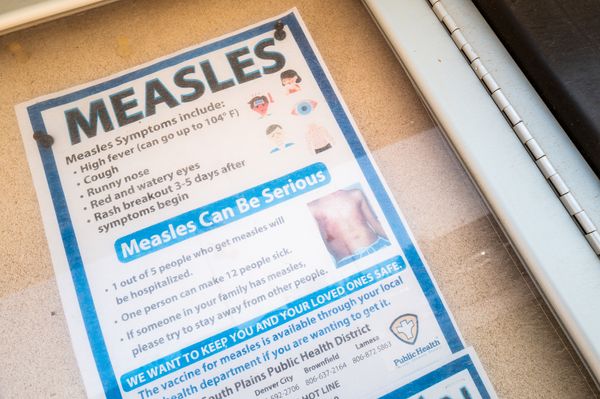
Preparations are well underway for Audi to make its Formula 1 debut in 2026, which will mark a new era for the world championship as the regulations are being overhauled.
The 2026 F1 season will have smaller and lighter cars with active aerodynamics. Electrical power will contribute half of the total power output in the redesigned power units that will run on 100 percent sustainable fuels.
It will also mark the arrival of Audi, which is in the process of taking over the Sauber team that joined the F1 grid in 1993.
The Swiss squad has given F1 debuts to many promising talents like Charles Leclerc, Felipe Massa and the 2007 world champion Kimi Raikkonen.
Its most successful period came under the BMW-Sauber guise from 2006 to 2010, when it claimed second in the 2007 constructors’ standings. It also won the 2008 Canadian Grand Prix with Robert Kubica, while finishing third in that year’s constructors' championship.
Audi has high hopes of surpassing that success, and will also produce its own engine. It is one of six suppliers currently committed to creating a power units for 2026, although there is doubt over Renault’s future as Alpine’s engine supplier.
So, why is Audi joining F1 and how does the picture currently look ahead of Sauber’s final season?
Why is Audi joining F1?

Audi first announced in August 2022 that it would become an F1 power unit supplier from 2026, after the new engine regulations were announced.
It is believed that Audi was swayed into joining F1 because the 2026 power units feature increased electrical power and 100 percent sustainable fuels. Audi was also understood to be supportive of F1’s cost cap and its desire to be net zero by 2030.
Markus Dussmann, Audi’s then CEO, said in 2022: “Motorsport is an integral part of Audi’s DNA. Formula 1 is both a global stage for our brand and a highly challenging development laboratory.
“The combination of high performance and competition is always a driver of innovation and technology transfer in our industry.
“With the new rules, now is the right time for us to get involved. After all, Formula 1 and Audi both pursue clear sustainability goals.”
Although those factors helped to sell the dream to the Audi board, it’s not the only reason why it decided to join F1.
Herbert Diess, former CEO of the Volkswagen Group which owns the Audi brand, was rather candid in explaining that F1 may help the company to beat its German rivals Daimler and BMW in the showrooms - the old ‘win on Sunday, sell on Monday’ adage. So, it went ahead with the plans.
Audi was initially coy on its partner team though, despite it being clear that the manufacturer was set to form an agreement with Sauber - something that was finally confirmed in October 2022.

It was indicated by Oliver Hoffmann, a former Audi board member, that its previous use of Sauber’s windtunnel for the World Endurance Championship played a role in its decision to partner with the Swiss outfit.
At the time, Sauber also confirmed that Audi would buy a minority stake in the company - later confirmed as 25 percent - and that was formally announced in January 2023.
But that didn’t have a huge short-term impact, as the team continued to race as Alfa Romeo before reverting back to the Sauber name for 2024. It will continue to use Ferrari power units until the end of 2025.
Sauber’s previous partnership with Alfa Romeo forced Audi to initially keep quiet about its F1 programme, but a lack of communication led to doubts about the entry.
That was denied by Dussmann's replacement as Audi CEO Gernot Dollner, who reiterated last year that “the plan is in place” to join F1 in 2026.
His comments were supported by the Sauber team representative Alessandro Alunni Bravi, who confirmed “we have certain limitations in communicating about the team, about the future, about the involvement of Audi, and we fully respect Alfa Romeo for this”.
Since Sauber’s partnership with Alfa Romeo ended, Audi has been more vocal - including approving plans for a full takeover before 2026 despite initial belief that its stake would go as high as 75 percent.
Audi has also been an active player in the driver market, amid a major management reshuffle that included Sauber CEO Andreas Seidl and Hoffmann leaving the project. In 2024, it was also announced that British energy company BP will produce sustainable fuels for the Audi F1 Team when it enters the series.
What will the Audi F1 Team driver line-up be?

Nico Hulkenberg will drive for the Audi F1 Team, as the 36-year-old has signed a multi-year contract beginning in 2025. It means that next season he will have a second stint at Sauber, having last driven for the outfit in 2013.
Although Hulkenberg being German is understood to be a key factor in Audi wanting him, it also follows an impressive run of performances where he has regularly beaten Haas team-mate Kevin Magnussen in their two years together.
But the situation around the second seat, which is currently vacant, has halted a lot of Audi’s momentum.
The primary target is Carlos Sainz, who is due to leave Ferrari at the end of 2024, yet Audi’s offer did not convince the grand prix winner. This means he is now weighing up options from Williams and Alpine as well.
The Spaniard, whose father Carlos Sainz Sr won the Dakar Rally with Audi in January, has repeatedly stated that he is keen to take time before deciding.
If Sainz rejects Audi, then there is not a long list of options.
Looking at the current Sauber line-up, Zhou Guanyu’s days in F1 appear numbered as the 25-year-old has largely failed to impress during his three seasons in the series.

But Zhou’s more experienced team-mate Valtteri Bottas remains key to the driver market with his contract also expiring at the end of 2024.
Nothing will really happen for the 10-time grand prix winner until it’s confirmed who Sainz will join, as he is largely dictating the market being the first choice option for so many.
Should the team not land its priority, then that may open the door for Bottas to remain with the operation and partner Hulkenberg into 2026, although the Finn is also understood to be in discussions with Williams.
Who will be the Audi F1 team principal?
Mattia Binotto will be the Audi F1 team boss, having been hired as part of a major management reshuffle due to a power struggle at the company.
At the start of 2023, Seidl left his role as McLaren boss to lead the Audi project and Hulkenberg said that the German was a “driving factor” in him joining the squad.
In 2015, they won the Le Mans 24 Hours together when Seidl was team principal of the dominant Porsche LMP1 squad, which Hulkenberg joined for two rounds that year at Le Mans and Spa-Francorchamps.
Seidl had free rein of the operation, but that suddenly changed when Hoffmann arrived in March as chairman of all Sauber companies. This made decision making more complicated and impacted progress.
Sauber’s competitive situation made the situation worse. It sits bottom of the 2024 F1 championship, as the only team yet to score a point.

Seidl and Hoffmann both departed the project, with Audi hiring Binotto to become the clear point of contact for senior management. Bravi believes this will “change the speed” of the Sauber takeover.
It is Binotto’s first job in F1 since leaving his Ferrari team principal role at the end of 2022, having joined the Italian marque in 1995.
The hiring has no doubt placed questions over the driver market, as Hulkenberg called it a “shock” that the two people who signed him will leave before he joins the team.
However, Hulkenberg is reassured that the reshuffle has not caused any doubts, as he is “more interested in the project” than working with those who signed him.
The change may even help the pursuit of Sainz, who had previously worked with Seidl at McLaren, as Binotto was his Ferrari boss for two years. Sainz said it will not influence his decision though, as he confirmed “I'm just going to keep giving myself time to take the decision, to analyse all these things that keep changing”.
However, Bottas reckons it will “reset” the driver market “because we have previously been in communication with Andreas and Oliver and now it's Mattia. For sure that will change some things, so we need to speak”.
Where will the Audi F1 Team be based?
The Audi F1 Team will be based between two facilities: Hinwil, Switzerland and Neuburg, Germany.
Audi will use Hinwil because that is where the Sauber operation has been run since the early 1970s, when it competed in sportscar racing, with the facility being spread across 15,600 square metres. That is where a bulk of the operation will be run, as Hinwil features a state-of-the-art wind tunnel building meaning the Audi F1 chassis will be constructed in Switzerland.

The Audi F1 power unit will be built in Germany though, as the company has held a 3,000 square metre Neuburg base since 2014. This includes 22 test benches for running power units. Audi has confirmed that it has already completed simulations on various F1 circuits, while employing approximately 300 members of staff to work on the project from Germany.
What is Audi’s history in motorsport?
Although 2026 will be Audi’s debut in F1, it still has a rich history in motorsport - particularly in sportscars and rallying.
Audi is second only to Porsche for the most Le Mans 24 Hours wins in history, as the marque has claimed 13 victories at the Circuit de la Sarthe.
The manufacturer's maiden win came in 2000, when its Joest-run factory team swept the podium with the R8. It was also the first of seven Le Mans victories for Tom Kristensen with the German brand.
Audi was so dominant at Le Mans that all 13 of its victories came in the first 15 editions of the race in the 21st century. Its final win was in 2014 with the R18.
A new dominant force then arrived, as Seidl’s Porsche team claimed its first of three consecutive victories in 2015. Audi struggled to keep up, departed from the grid in 2017 and has not returned since.
It has also been a long time since the Audi works team competed in the World Rally Championship. It last contested a WRC campaign in 1987, the first season of Group A regulations after the fabled Group B era was curtailed.
That 1987 season ended a successful seven-year stint, during which Audi won the manufacturers’ championship in 1982 and 1984.

Perhaps its most memorable season came in 1983 though, as Audi was embroiled in a season-long battle with Lancia where both outfits won a combined 10 of 12 rallies.
Lancia eventually beat Audi to the manufacturers’ title by just two points, despite Audi’s Hannu Mikkola clinching the drivers’ crown - all of which was captured in the 2024 film Race For Glory: Audi Vs Lancia.
Audi does have recent pedigree in rallying though, as it claimed an historic first victory at the Dakar Rally in 2024 despite the RS Q e-tron making its debut just two years prior.







